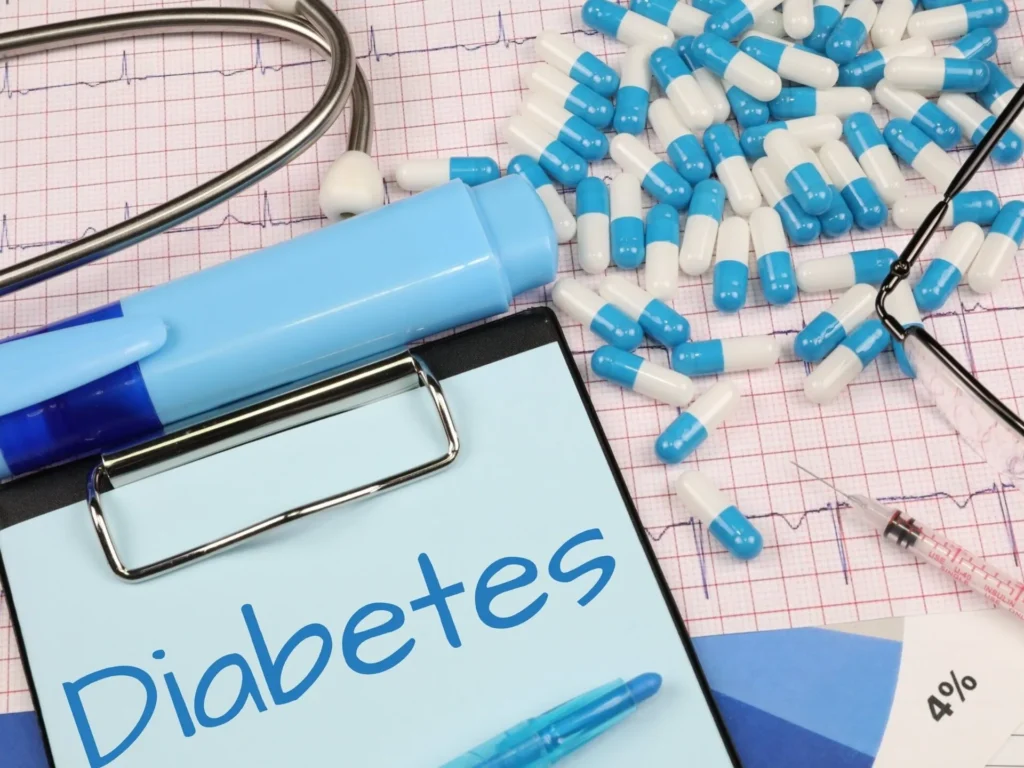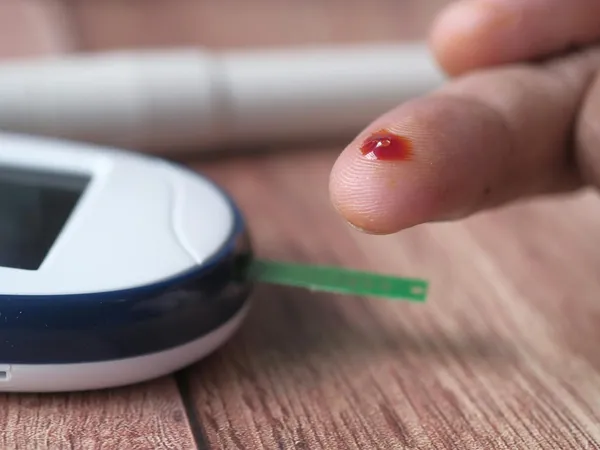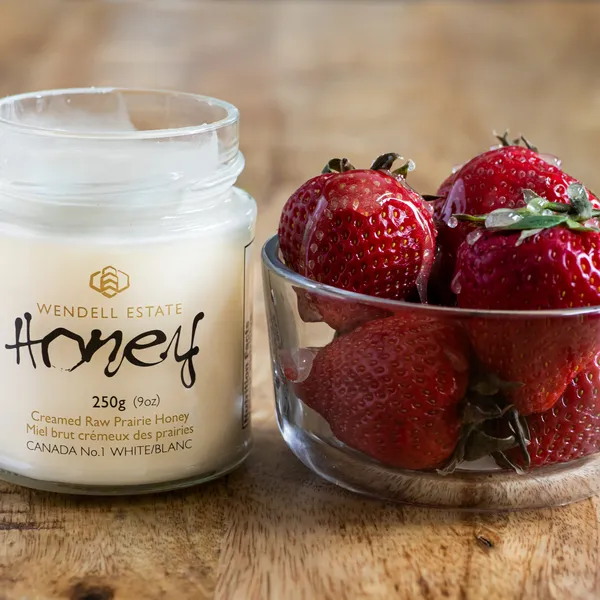
Raw Honey and Diabetes: A Look at the Research
There’s a lot of misinformation, even among professional dieticians and physicians, regarding diabetes and raw honey. I’m going to try to clarify, with reference to peer-reviewed academic research on this topic. Note that in this post, when I use the term “diabetes”, I’m referring to the much more common (and increasingly common) Type 2 or Non-Insulin Dependent Diabetes Mellitus (NIDDM, which has a different cause than the autoimmune Type 1 or Insulin-Dependent Diabetes Mellitus (IDDM).
Contents
click to navigate to the section:
What is Type 2 Diabetes?
The Problem with Diabetes
The Role of Sugars
Eating Raw Honey Decreases the Chances of Developing Type 2 Diabetes
Raw Honey is NOT “Just Another Sugar”
Raw Honey is Better Tolerated than Processed Sugars in People with Diabetes
Raw Honey as a Treatment for Diabetes
What is Type 2 Diabetes?
Type 2 diabetes is a metabolic disorder characterized by resistance to insulin. When you eat a meal containing carbohydrates, your digestive tract breaks the carbohydrates down into glucose, which then enters your circulation. In response to increasing blood glucose and an overabundance of circulating energy, the pancreas releases the hormone insulin which causes muscle cells (myocytes), liver cells (hepatocytes) and fat cells (adipocytes) to remove the glucose from the blood and turn it into either glycogen for shorter-term energy storage (muscles and liver) or fat for longer term energy storage (fat cells and liver). The road to diabetes starts with prolonged high carbohydrate consumption that eventually leads to cells developing resistance to the repeated high levels of insulin required to maintain healthy blood sugar levels. In response, the pancreas increases insulin output, attempting to bring blood glucose levels into a healthy range as excess circulating glucose causes damage to many body tissues. A vicious cycle ensues with muscles, fat and liver tissues becoming increasingly resistant to insulin with exposures to ever-higher levels of increased insulin. One of the body’s basic homeostatic mechanisms, energy control, starts to collapse. Eventually the pancreas loses its ability to maintain high levels of insulin and blood glucose increases beyond its normal acceptable levels.


The Problem with Diabetes
Diabetes isn’t a condition to be taken lightly. Diabetes was ranked as the seventh leading cause of death in the USA in 2017, but because diabetes and elevated blood glucose levels cause so many issues with many organs and body systems, deaths due to diabetes are likely underestimated. Prolonged elevated levels of glucose in the blood can lead to a whole host of health problems including:
- Nerve disease (diabetic neuropathy) that can involve decreased sensation of touch as well as weakness, usually more pronounced in hands and feet.
- Cardiovascular diseases including heart attacks (myocardial infarction). People with diabetes have 2-4 times the risk of coronary heart disease compared to those without diabetes.
- Kidney failure: Diabetes is the leading contributor to end-stage renal (kidney) disease.
- Eye disease (diabetic retinopathy) and blindness. Diabetes mellitus is the major cause of blindness in adults aged 20-74 years in the United States
- Decreased immune function with increased risk and severity of infections.
- Accelerated atherosclerosis and decreased circulation, affecting virtually all parts of the body. Especially noticeable in the hands and feet where poor circulation can cause constant pain and eventually amputation. Excluding trauma and accidents, diabetes is the leading cause of limb amputations in the USA.
- Mental health issues.
- Diabetes appears to increase the risk of various cancers and dementia.
- Sexual dysfunction.
These are very serious issues. However, it’s not all gloom and doom. You can greatly reduce your (and your childrens’) risk of developing Type 2, NIDDM diabetes mellitus by making healthy diet and lifestyle choices. If you already have diabetes, careful control of blood sugars, in close coordination with a specialist health care provider dramatically reduces the consequences and the risk of the serious sequela mentioned above. There’s much good evidence that eating raw honey significantly decreases the risk of developing type 2 diabetes. Raw honey’s protective effect against diabetes is amplified further if it replaces dietary processed sugars. For people that already have diabetes, raw honey is also probably safe to eat in moderation and is even being researched as a treatment for diabetes. More on raw honey and diabetes in a bit.

The Role of Sugars
Consuming processed sugars or other carbohydrates with a high glycemic index (GI) causes a rapid spike in blood glucose levels. The body’s homeostatic response kicks in to counter this excessive, harmful blood glucose load by rapidly increasing blood insulin to return blood glucose to a normal, healthy level. Repeated insulin spikes from years of ingesting excess processed sugars can lead to insulin resistance. Continuation of a diet high in processed sugars is often followed by the development of type 2 diabetes mellitus, where the body loses its ability to regulate blood sugars and keep them in a range compatible with health. Left uncontrolled, diabetes often leads to some or many of the health issues mentioned above. There’s a vicious cycle component to this as well: The insulin spike that occurs as a reaction to the blood sugar peak following ingestion of high GI foods then causes a rapid decrease in blood glucose levels. The pendulum swings too far, the blood sugar drops too quickly, and the body then craves more sugar. This is probably a major reason why many food manufacturers add processed sugars to everything from bread to clam chowder: that sugar craving from the blood glucose spike and drop leaves you craving more of what you just ate.
Eating Raw Honey Decreases the Chances of Developing Type 2 Diabetes

For many years now it has been well-established that eating natural honey reduces the chances of developing diabetes. Because a diet rich in excess processed sugars is one of the largest risk factors for developing type 2 diabetes, the more dietary processed sugars are replaced by natural honey, they greater the health benefits received. Not only does eating raw honey offer protection against diabetes, it also protects against many of the complications and some other causal factors of diabetes. This study dating back to 2008 shows that eating honey instead of eating processed sugars results in a healthier weight (obesity is an independent risk factor for developing diabetes). One of the most important consequences of developing diabetes is the increased risk of heart disease such as heart attacks. That same study is one of many that shows not only does eating raw honey reduce the risk of diabetes, it has other beneficial effects on blood pressure and cholesterol profile that further help to prevent heart disease.
Decrease your chances of developing diabetes by eating raw honey.
Use coupon code NoDiabetes for 10% off orders up to $110
Raw Honey is NOT “Just Another Sugar”!
I can’t emphasize this enough. There’s a growing mountain of solid research to support the idea that the effects of raw honey on health are nearly the opposite of processed sugar’s health harms. Unlike processed sugars, natural raw honey is metabolized much differently by the body and provokes neither a rapid blood glucose spike, nor an insulin spike. As raw honey is largely composed of sugars, the vast difference in physiological effects of honey versus sugars is surprising. Most honeys are roughly 80% sugar (about half of which is fructose and half of which is glucose), with a higher energy density than processed table sugar. However, when honey is consumed, the blood glucose rises gradually in a manner that is gentler and healthier for the body. The accompanying insulin response is more gradual, so the insulin resistance that develops over time with long-term consumption of excess processed sugars does not occur with long-term honey consumption. Compared to other carbohydrates, honey is converted into liver glycogen especially efficiently. Liver glycogen is a primary source of energy for the body between meals, during exercise, and during sleep.
Physiologic studies show that raw honey directly stimulates the pancreas to release insulin. Both human and animal studies demonstrate that blood glucose levels are more stable: a lower, more gradual peak without the rebound low blood sugar “sugar crash” that leaves one feeling hungry and specifically craving sweet, sugary foods. While excess processed sugars cause insulin resistance over time, honey does the opposite, enhancing insulin receptors in the liver and stimulating glucose uptake.
While research continues to confirm that raw honey is much healthier than processed sugars, the reasons why this is so are more complex. It’s one thing to measure health and incidence or prevalence of health issues in people who eat more honey versus people who don’t, but it’s a more difficult problem to determine exactly what it is in the honey that provides specific health benefits. Some factors thought to contribute to the anti-diabetic effect of honey is the fructose in honey as well as the ratio of fructose to glucose (around 1:1 in most honeys). Mineral ions (such as zinc, copper and vanadium), phenolic acids and flavonoids have been hypothesized to play roles contributing to the positive effects of raw honey on blood sugar control.

Raw Honey is Better Tolerated than Processed Sugars in People with Diabetes
A 2018 review of scientific studies on honey and diabetes stated “If honey was demonstrated to have hypoglycemic [blood sugar lowering] effect in healthy animals, the same beneficial effect was observed in induced diabetic animals.”1
This study of 50 individuals with diabetes showed better blood glucose control (lower peak glucose and peak incremental index) among people with diabetes after eating honey than after eating processed sugar (sucrose). Another smaller (28 participants with diabetes), but longer study compared eating rather high amounts of honey (the equivalent of 2 or 3 tablespoons per day for an average-sized adult) for 12 weeks versus not eating honey. This was a crossover study, meaning that one group of participants ate honey for 12 weeks, while the other group didn’t, and then the groups swapped so that the people who were in the non-honey group then began eating honey for 12 weeks, while the other group returned to a non-honey diet. Fasting blood sugar and cholesterol profiles were measured for all participants throughout the study. The study showed that eating honey significantly reduced fasting blood sugar and improved cholesterol profile. Importantly, this study didn’t compare honey against sugar in diabetics, but simply added honey to the participants’ regular diet at a relatively high dose. Though the study only involved 28 participants, the statistically significant results with significant daily honey consumption offer good evidence that honey is well tolerated among people with diabetes2
Caution is Warranted

This 8-week study of honey in people with diabetes showed no difference in fasting blood sugars between the group of people that took natural honey for 8 weeks compared to those that kept to their regular diet without honey. However, the honey group did show increased levels of hemoglobin A1C, a longer-term marker of blood sugar control commonly used to monitor treatment of diabetes, which does raise questions about blood sugar control. Fasting blood sugar measurements gives a snapshot of blood sugar control, but hemoglobin A1C reflects the 3-month cumulative blood sugar levels, so is a more sensitive measure of overall sugar control and more accurate predictor of future complications of poor blood sugar control. The fact that one group had honey added to their regular diet while the control group continued their regular diet may mean that the honey group simply ate more carbohydrates (honey is a carbohydrate), which might explain the undesirable elevation of hemoglobin A1C in the honey group. This long-term study of honey in diabetic rats appears to contradict the above small human study, clearly showing a decrease in hemoglobin A1C levels (along with healthier weights) in the honey group. These conflicting results underline the importance of regularly monitoring overall blood sugar control by periodic hemoglobin A1C measurements.
A Step Further: Raw Honey as a TREATMENT for Diabetes.
The strong protective effect of honey on preventing the development of diabetes has led researchers to ask if raw honey might be used to treat diabetes. In physiologic tissue studies and in animal studies, ingestion of raw honey appears to increase the effects of anti-diabetic medications like metformin (commonly known by its brand name, Glucophage) and glybenclamide (also known as glyburide, and commonly used in conjunction with metformin to treat type 2 diabetes). Furthermore, raw honey seems to offer therapeutic benefits that neither pharmaceutical does. This animal study showed that the concentrations of harmful thiobarbituric acid reactive substances (TBARS) that are elevated in diabetic patients and thought to contribute to complications of disease were reduced more by treatment with honey than by treatment with both metformin and glibenclamide. Catalase is an enzyme that protects the body from oxidative damage and is usually decreased in people with diabetes. In this study, treatment with metformin and glyburide had no significant effect on catalase levels, but honey, with or without metformin and glibenclamide increased the levels of this important antioxidant. Oxidative damage to tissues is thought to be an important mechanism in damaging the pancreas and in the complications that people with diabetes suffer.

Enjoy healthy sweets by eating raw honey fresh from our farm to your table.
Use coupon code NoDiabetes for 10% off orders up to $110
Final Words
Type 2 diabetes is often called a “lifestyle disease” due to its association with a diet rich in simple carbohydrates and excess processed sugar, decreased consumption of natural fruits and vegetables, as well as a lack of physical activity. The first defense against diabetes and its myriad of debilitating complications is eating healthily and getting sufficient exercise. There is good evidence that eating raw honey will decrease the chance of developing type 2 diabetes. This protective effect increases if raw honey replaces dietary processed sugar. If you currently have diabetes, eating honey should be better tolerated and healthier for you than eating processed sugars. Raw honey should be at least as well-tolerated as fruit in diabetes, and perhaps even better, given its myriad of anti-diabetic physiologic activities. Honey is a carbohydrate though, so care must be given to monitor your blood sugars and hemoglobin A1C when adding honey to your diet just as with any carbohydrate. New research into honey as a treatment for diabetes looks promising, but it is new and evolving. It is certainly not advisable for people with diabetes to simply start eating raw honey in order to control their diabetes. Diabetes treatments should be undertaken with a health professional competent in dealing with diabetes.
Notes:
- In animal research studies on diabetes, diabetes is often induced into healthy animals by a surgical/chemical methods.
- Both this study and the previous study recruited participants with the rarer, type 1, insulin-dependent diabetes. While this form of diabetes is not caused by diets rich in processed sugars and other simple carbohydrates, but by an autoimmune disorder, the inability to regulate blood sugars is similar in both forms of diabetes. If type 1 diabetics tolerate honey well, there’s no reason this wouldn’t also apply to people with type 2 diabetes, who generally retain better pancreatic functioning.
Jeremy Wendell
Share this story
